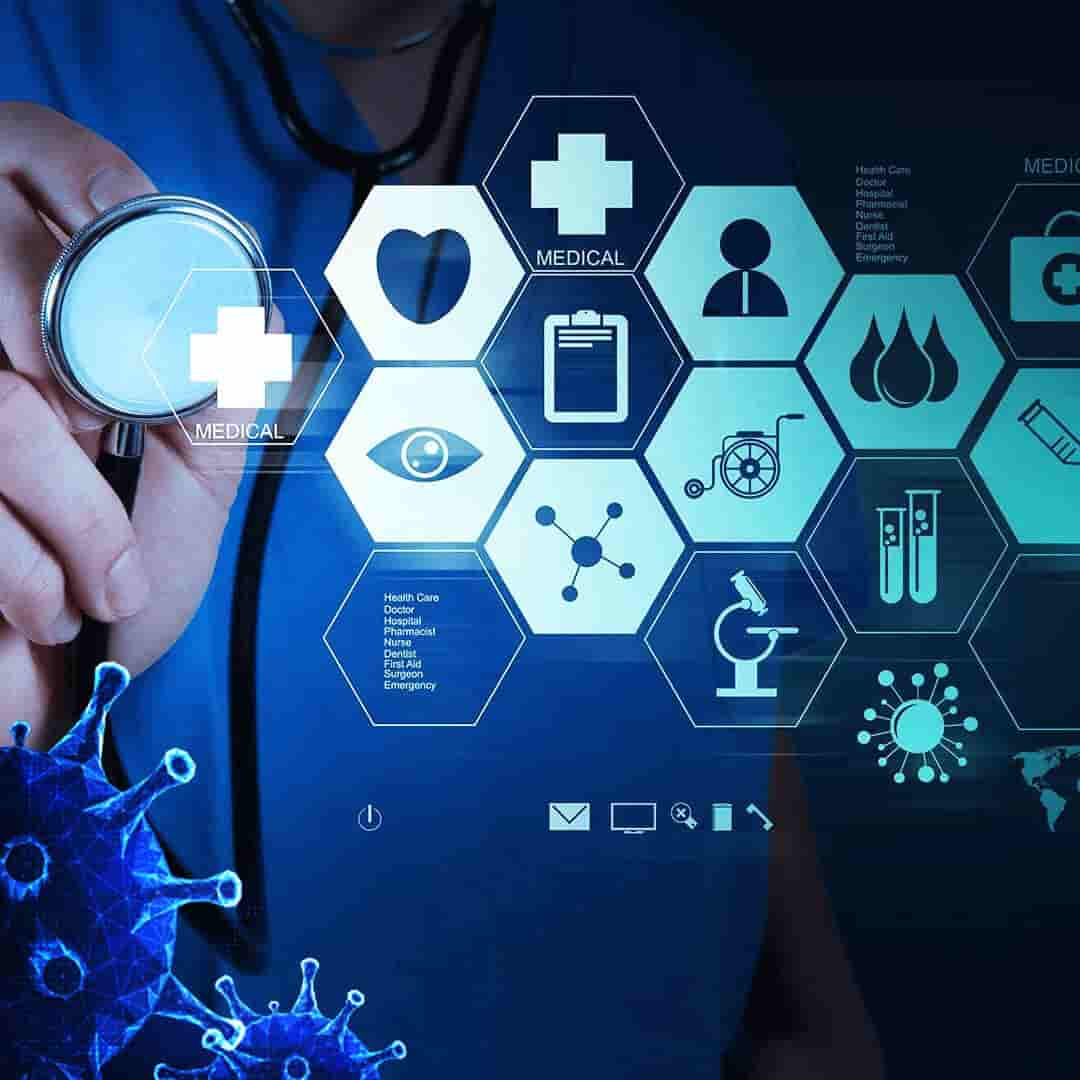Digital-health, Digital-transformation, Telemedicine
Rise of Digital Healthcare/Telemedicine during Covid
Prior to the Coronavirus pandemic, digital healthcare or telemedicine was a relatively new form of healthcare delivery that was still far from mass adoption in the industry. However, Covid-19 completely changed existing healthcare delivery models in the blink of an eye. Now, telemedicine has become a mainstay of healthcare delivery and is definitely here for the foreseeable future.
As the pandemic kept people restricted to their homes, no one could go to a hospital or clinic unless it was an emergency. It became necessary to deliver healthcare remotely as much as possible to prevent the further spread of the pandemic. This was a huge boost in the adoption of digital health measures like telemedicine, remote monitoring, and digital health tracking.

The Use Of Technology And Analytics In Healthcare:
The healthcare sector is slow in adoption of technology. There is hesitancy in healthcare providers to depend too much on technology. After all, medicine does require a human touch. However, technology can provide the necessary data to drive these human decisions leading to better patient outcomes and this can be done without sacrificing empathy and compassion.
AI and machine learning can be vital tools for doctors, helping them make smarter and quicker decisions. The Coronavirus pandemic has hastened the use of telemedicine by both healthcare providers and patients, that has helped save many lives in these times.
Digital Healthcare During The Pandemic
The Coronavirus pandemic has familiarized the industry with several digital transformations including:
Telemedicine
Telemedicine involves doctor-patient consultations happening online, usually through video conferencing. As video conferencing became a part of daily life, patients and doctors alike are now more comfortable with online consultations. Telemedicine is perfect for remote care of chronic conditions, minor emergencies, counseling, follow-up care, and more.
Remote Monitoring
Remote monitoring and digital tracking of health parameters have made it possible for doctors to safely monitor their patients at home. This allows the patients to remain comfortable at home while also allowing the doctor better monitoring through tracking devices, sensors, etc.
Mobile applications
The pandemic has driven the use of mobile apps by patients and caregivers to track symptoms, treatment, and outcomes. This is also an easy way for doctors to track multiple patients and use the data to drive better treatment over time. Mobile apps also played an important role in contact tracing.
Other digital transformations during the pandemic include the use of AI bots for tele-consulting, predictive analytics, AR training, and bringing sustainability to the healthcare supply chain.
The future of digital health is bright with the entire industry rapidly adopting cloud computing, big data analytics, and digital communication. As this field expands, the question of data security around patient records is at the forefront of every discussion. Only time will tell how far digital health can take us.
Stay In the Know
Get Latest updates and industry insights every month.